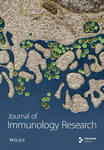T Cells of Different Developmental Stages Differ in Sensitivity to Apoptosis Induced by Extracellular NAD
Abstract
Extracellular nucleotides such as ATP and NAD can profoundly affect the functions of lymphocytes, macrophages, and other cells. We have recently shown that extracellular NAD induces rapid apoptosis in naive T cells by a mechanism involving the ADP-ribosylation of cell surface molecules. In the present paper, we describe that T cells of different developmental stages differ in their sensitivity to NAD-induced apoptosis. Thymocytes were less susceptible than peripheral lymph node T cells, and freshly activated cells were more resistant than resting cells. Sensitivity to NAD-induced apoptosis generally correlated with expression of the ADP-ribosyltransferase ART2.2, which is not expressed on thymocytes and shed from peripheral T cells upon activation. Our findings suggest that NAD-induced apoptosis does not play a role during thymic selection of T cells, but rather may play a role by preventing the activation of unwanted bystander T cells during an immune response, and thus may participate in the control of autoimmunity.




